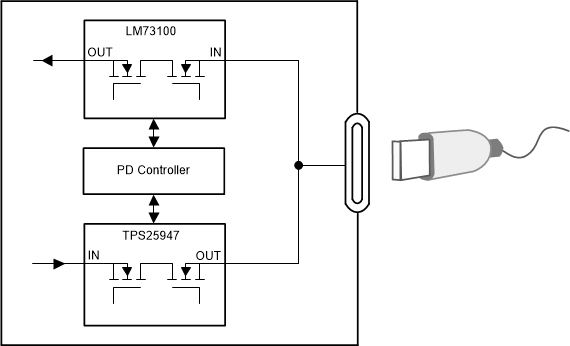SLVAEY2A August 2020 – October 2020 LM7310 , TPS25947
1 Introduction
USB Type-C interface is quickly becoming one of the most popular ways of connecting electronic devices. From speakers to laptops, a single USB Type-C port can deliver power and offer high-speed data transfer. However, USB Type-C faces its own set of design challenges such as the process of Fast Role Swap (FRS). Its power-protection devices also need to qualify for the unique design specifications while protecting the port from overvoltage, short circuit, and reverse current. The TPS25947 efuse and LM73100 ideal diode can offer power protection while meeting the USB-Type C requirements for robust high power delivery, high-speed data transfer, and FRS.
 Figure 1-1 USB Type-C Power Protection
Block
Figure 1-1 USB Type-C Power Protection
BlockFigure 1-1 shows that two protections devices are needed per port to protect the system at all times especially during FRS.